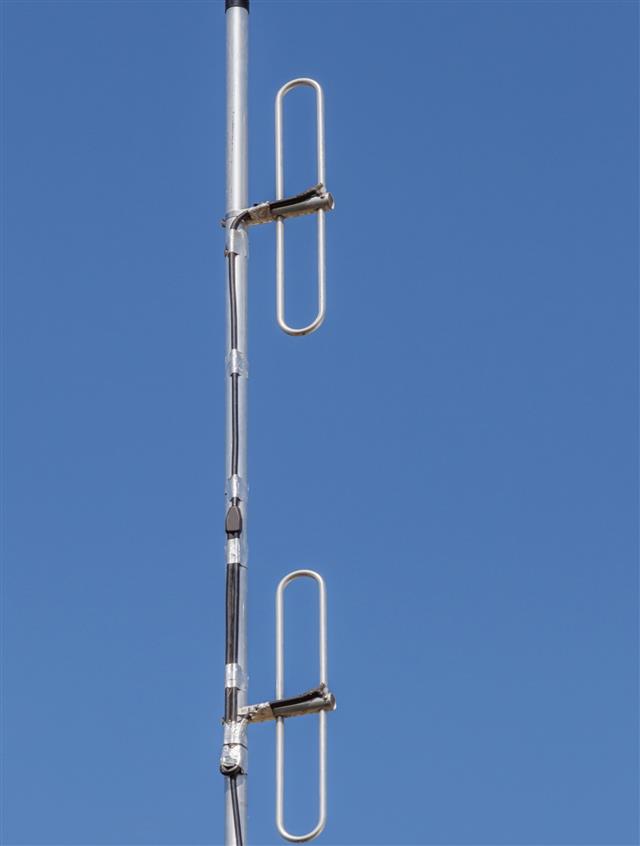A dipole antenna is an electrical conductor that is made up of wires, and is connected at the center to a radio frequency (RF) feed line, for transmitting or receiving RF energy.
The dipole antenna was developed by a German physicist called Heinrich Rudolph Hertz in 1886. It is one of the most common and simplest types of RF antennas, which is fed with a balanced and parallel-wire RF transmission line.
Description
This antenna consists of two poles, through which the RF current flows. A RF transformer known as ‘balun’ is inserted in the system, where the feed line connects the antenna, for optimizing the RF current distribution on the antenna element, and in the feed line. The current amplitude consistently decreases from maximum at the center to zero at the ends.
On the contrary, the RF voltage is maximum at the ends and minimum at the center. This current and corresponding voltages cause the radiation of electromagnetic and radio signals. The antenna can be oriented horizontally, vertically, or in a slanted manner.
The polarization of the electromagnetic field (EM) that is radiated by the transmitting antenna, correlates to the orientation of the element. While receiving the RF signals, the antenna is extremely sensitive to EM fields, whose polarization is analogous to the above orientation.
Different types of simple dipole antenna include the folded dipole antennas, ideal half wavelength antennas, and hertzian dipole antennas.
Building Process
Before you start, first select its working frequency. Such antennas work well on frequencies that are an odd multiple of ½ wavelengths. For example, if the dipole is cut for 7.0 MHz, then it will function well on 21 MHz.
Things Required:
RG-8X Coax, 30-foot aluminum push-up pole, antenna tuner, center/end insulators, 100-feet lightweight nylon rope, electric driller, screwdrivers, ground wires, pulley hooks, pulleys, 135 feet of copper wire, cable ties, electrical sealants, wire nippers, and wire-insulation strippers.
Steps:
- Design the layout of the dipole, and extend each dipole leg to about 65 feet in a straight line.
- Use a 30-foot TV mast (sturdy upright pole) that is fixed to house eaves to support the center insulator.
- Connect a small pulley to the mast top. Pass the rope through the pulley, and erect the mast.
- Scrap the copper wire, either bare or insulated, and cut the wire in half.
- Connect one point of the end insulators to the center insulator, covering the connection with the sealant.
- Use cable ties to fix the coax to the house, and also between the mast and the entrance point.
- Connect the center insulator to the rope end, and pull it towards the top of the mast.
- Feed the coaxial cable from the antenna support mast to the point that is closest to the radio room.
- With the help of an electric drill, bore a hole in the floor or wall, and feed the cable through it.
- Connect the cable to the antenna tuner, and pass the ground wire from the tuner to the ground rod.
- Finally, using a coaxial cable, attach the tuner to the radio.
While building it, the dipole antenna should be more than ½ wavelength above the ground, or any conducting medium like a sheet metal roofing. Also, keep in mind that the element should be few wavelengths away from the electrically conducting obstructions like towers, utility wires, and other antennas.
